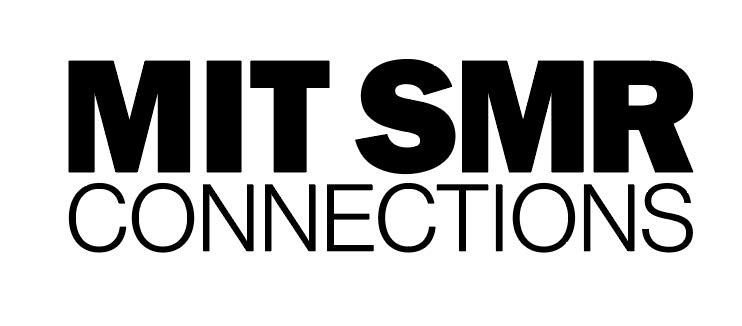Exhaustion while working at home is an increasing concern, but new solutions are paving the way for a brighter future.
In August 2020, a large outdoor retail company made a surprising announcement. In a video call, the president and CEO told employees that it would be selling its newly completed, eight-acre corporate campus. Located in Bellevue, Washington, the sprawling complex featured courtyards full of plants, flowers, and open-air work spaces. A national newspaper called it “the most outdoorsy HQ ever.”
But after employees had worked remotely for several months, it became clear that the massive futuristic workspace was already obsolete. “The dramatic events of 2020 have challenged us to reexamine and rethink every aspect of our business and many of the assumptions of the past. That includes where and how we work,” said the company’s CEO. “As a result, our new experience of ‘headquarters’ will be very different than the one we imagined more than four years ago.”
The brick-and-mortar operation, like so many others from tech to manufacturing, moved to a hybrid work model in the wake of the COVID-19 pandemic, enabling employees to spend half their time working from home and the other half working from small satellite offices. Like many other companies, the majority of them warmed up to the idea of full-time remote work very quickly.
Warming Up to Remote Work
More than 80 percent of U.S. companies are now using a hybrid work model, according to a recent survey by a national real estate brokerage firm. (The company surveyed 164 commercial landlords and senior real estate executives.) Yet despite the benefits of remote work, there is a growing body of research—and an alarming quantity of news coverage—focused on a prominent downside: employee burnout. And while burnout is real, the causes often have nothing to do with remote or hybrid work itself.
In a 2021 survey from Lloyd’s Register, 69 percent of respondents reported higher levels of work-related stress while working from home, which was attributed to increased workloads. According to a May 2021 study by the Families and Work Institute, more than half of Americans have experienced workplace burnout. Based on observations like these, burnout has become a hot topic, especially with regard to remote work. And yet much of the coverage conflates burnout and screen fatigue. The reality is more nuanced. While burnout and screen fatigue overlap—and the latter may indeed contribute to the former—they are distinct issues. Screen fatigue, for instance, is rooted in poor work habits, like remaining bent over a small device for hours. Burnout, on the other hand, is caused by factors like anxiety, uncertainty, and bad management practices. A recent survey by McKinsey and Company, for instance, found that an organization’s lack of vision for a hybrid work plan led to anxiety among employees.
Fanning the flame of the Great Resignation?
The recent rise in, and focus on, burnout has been linked to the Great Resignation, the higher than usual turnover at companies. But this phenomenon is likely to have more to do with personal decisions than modes of working.
“Crisis research shows us a number of things, including the resulting self-reflection that can occur,” says Alanah Mitchell, a professor and chair of information management and business analytics at Drake University. In the case of the pandemic, being cooped up for long stretches while working long hours led many to reconsider job satisfaction and overall life choices. “This self-reflection may be one of the reasons employee burnout is so evident today,” says Mitchell.
That said, employee burnout in a remote or hybrid work environment is a real issue, and the causes of it can vary depending on circumstances. For example, it’s no revelation that having kids at home while working creates distinct challenges. That said, a remote or hybrid work option for a single mother of two may be more appealing, because she doesn’t have to waste time commuting to an office and can be on hand should something come up.
In short, there is no universal explanation for why people get burned out, and there’s no one-size-fits-all prescription for avoiding it in hybrid work scenarios. So does that mean that we’re all inevitably on a path to burnout?
Far from it.
Mitigating Potential Downsides of Remote and Hybrid Work
As with office culture, managers and HR staff need to help mitigate potential downsides for remote and hybrid workers. (It’s of course up to the workers themselves to deal with the arguably more sensitive task of managing at-home politics.) And that will take some serious rethinking of how to manage employees, along with some new habits.
“There are a couple of pretty good tricks that I’ve seen,” says Mitchell. “Having a standing online remote meeting once a week, in the morning, is a great way to coordinate your team and make a synchronous connection. It helps everybody trust that what they’re doing on their own is on track with what everybody else is doing.”
Mitchell acknowledges that the hybrid model will continue to experience growing pains. “Everything is constantly evolving,” she says, “but hybrid work is here to stay. Studies are finding that the vast majority of both employers and employees are happy with it.”
The most effective way to prevent employee burnout in the hybrid work model is by addressing the growing disconnect between employees and their bosses. A paper published in Organizational Dynamics in July 2021 found that in-office work promotes structure and transparency, which may increase trust between management and workers. With that kind of structure gone from remote work, leaders must become more attentive listeners and be “deliberate about asking for team feedback on needs, roadblocks, and feelings. Leaders need to work to establish communication practices that ensure everyone knows what is going on, regardless of their location.”
One Simple Fix: Treat Everybody as a Remote Worker
“If a boss is making an announcement to their team, they don’t tell the people they see in the office first,” Mitchell says. “They tell everybody at the same time, via an email, call, or videoconference—leveling the playing field across the board.”
In the future, when employees or managers are beaming into virtual office environments with their holograms or avatars, these AR and VR interactions will normalize the divide between in-person workers and remote ones. And as organizations get better at overseeing remote workers, it’s easy to envision a future where business management schools offer classes on remote team building, for example, or where leadership coaches focus on strategies to connect with employees working remotely.
“Looking forward,” says Mitchell, “hybrid work has the potential to be the best of both worlds, both face-to-face and remote, even if there is much to learn.”
This article was produced by WIRED Brand Lab on behalf of Webex.





